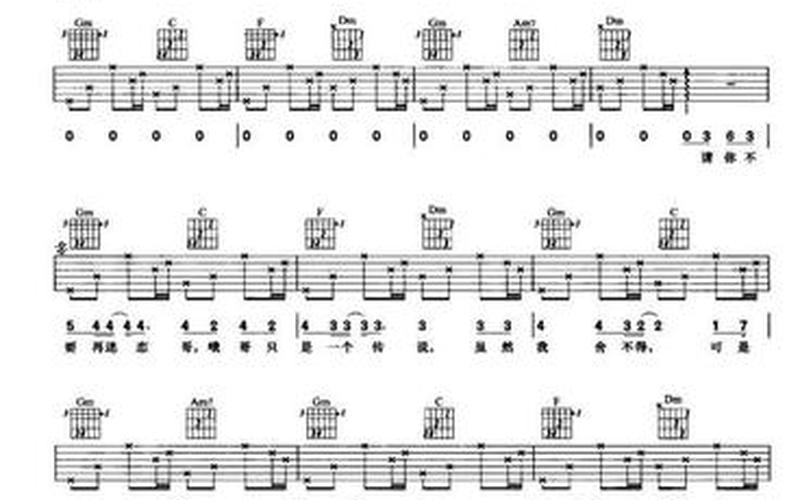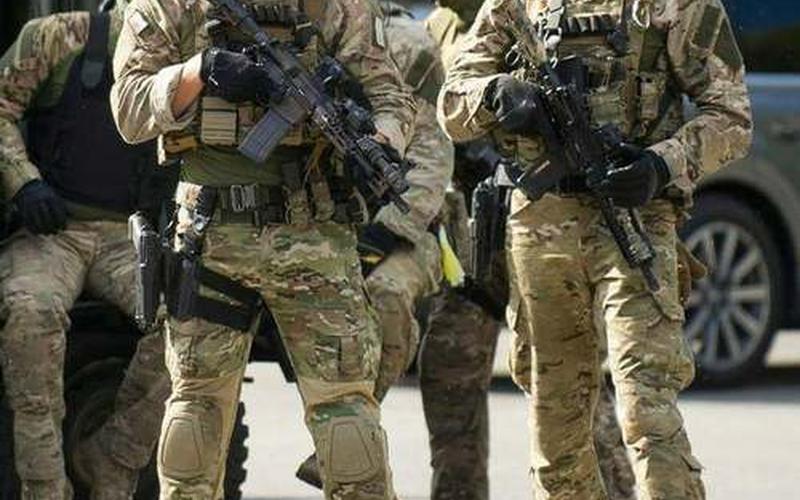quickly的比较级和更高级,slowly的比较级和更高级?
quickly--more quickly--the most quickly;slowly--more slowly--themost slowly;一般两个音节以下的词都用-er,-est(特殊的除外)但是例外的就是由形容词加-ly的,一般用more,most总结一下英语中形容词、副词比较级和更高级的变化:
(1)大多数单元音节的形容词的比较级是在原形的后面加上-er,比如: *** all- *** aller,large-larger.
(2)在重读闭音节中,辅音加元音的单词中,双写辅音字母,然后加-er,例如:hot-hotter,big-bigger.
(3)有些以-y结尾的双音节形容词,如果-y前面是一个辅音字母,变比较级的时候就要把-y变成-I,然后再加-er.例如:pretty-prettier.
(4)在多音节当中,用more+形容词原形.
(5)不规则变化:little-less-least,many\much-more-most,well\good-better-best,bad-worse-worst,far-rarther\further-farthest\furthest,difficult-moredifficult-themostdifficult,
thin的比较级和更高级slowly?
thin的比较级是thinner ,更高级是thinnest
下面分享相关内容的知识扩展:
英语slow 不加ly可以做副词吗
he read phrase slowly词典里面 slow 也有adv 为什么非要加ly 才是副词呢
柯林斯词典给出的关于副词的释义如下:
ADV-GRADED(用于非正式英语中)缓慢地,慢吞吞地In informal English, slower is used to mean 'at a slower speed' and slowest is used to mean 'at the slowest speed'. In non-standard English, slow is used to mean 'with little speed'.语法信息
英语释义翻译过来就是:在非正式英语中,“slower”被用来表达“在一个缓慢的速度下(走或行驶)”,而“slowest”则表示“在最慢的速度下(走或行驶)”。在不标准的英语中,slow能表达“以很慢的速度”的意思。
但很显然,明确指出,slow做副词的释义只用于非正式、不标准的英语中。
因此,通常更好不要用来当副词。
例句:I began to walk slower and slower...
我走得越来越慢。
英语当中 大声说是 speak loudly 副词在后面. 但是 默默服从 为什么是 silently obeyed.
英语当中 大声说是 speak loudly 副词在后面.但是 默默服从 为什么是 silently obeyed.
为什么都是动词 一个副词在前 一个在后 silently obey可以改成 obey silent 吗?
副词什么时候放在动词前 什么时候放在动词后
语法习惯呢? ps :speak和obey是动词.不是名词 一楼你错了
silently obey可以改成obey silently吗
有时候副词是可以放在名词前面的而且很常见。。。。噢,sorry,一激动说错了是动词。副词主要用来修饰动词,形容词,副词或其他结构。
一、副词的位置:
1) 在动词之前。
2) 在be动词、助动词之后。
3) 多个助动词时,副词一般放在之一个助动词后。
注意:
a. 大多数方式副词位于句尾,但宾语过长,副词可以提前,以使句子平衡。
We could see very clearly a strange light ahead of us.
b. 方式副词well,badly糟、坏,hard等只放在句尾。
He speaks English well.
二、副词的排列顺序:
1) 时间,地点副词,小单位的在前,大单位在后。
2) 方式副词,短的在前,长的在后,并用and或but等连词连接。
Please write slowly and carefully.
3) 多个不同副词排列:程度+地点+方式+时间副词。
注意:副词very 可以修饰形容词,但不能修饰动词。
改错:(错) I very like English.
(对) I like English very much.
注意:副词enough要放在形容词的后面,形容词enough放在名词前后都可。
I don't know him well enough.
There is enough food for everyone to eat.
There is food enough for everyone to eat.
一定要和形容词结合才能分清副词的用法:
形容词和副词形容词和副词在语法结构中主要用于比较级和更高级。形容词和副词的构成形式基本上一样,它们的形式与单音节、双音节和多音节有关,当然还有其特殊形式。形容词和副词比较级的基本用法分为同级比较、比较级和更高级三种形式。但这三种形式都有它们特殊的表达方式以及它们的惯用法。对以下要点大家须一一掌握。
之一节 形容词比较级和更高级的形式
一、形容词比较级和更高级的构成
形容词的比较级和更高级变化形式规则如下
构 成 法 原 级 比 较 级 最 高 级
① 一般单音节词末尾加er 和 est strong stronger strongest
② 单音节词如果以e结尾,只加r 和st strange stranger strangest
③ 闭音节单音节词如末尾只有 一个辅音字母,
须先双写这个辅音字母,再加er和est sad
big
hot sadder
bigger
hotter saddest
biggest
hottest
④ 少数以y,er(或ure),ow,ble结尾的双音节词,
末尾加er和est(以y结尾的词,如y前是辅音字母,
把y变成i,再加er和est,以e结尾的词仍
只加r和st) angry
clever
narrow
noble angrier
cleverer
narrower
nobler angrest
cleverest
narrowest
noblest
⑤ 其他双音节和多音节词都在前面加单词more和most different more
different most
different
1) The most high 〔A〕 mountain in 〔B〕 the world is Mount Everest, which is situated 〔C〕 in Nepal and is
twentynine thousand one hundred and fourty one feet high 〔D〕 .
2) This house is spaciouser 〔A〕 than that 〔B〕 white 〔C〕 one I bought in Rapid City, South Dakota 〔D〕 last year.
3) Research in the social 〔A〕 sciences often proves difficulter 〔B〕 than similar 〔C〕 work in the physical 〔D〕 sciences.
二、形容词比较级或更高级的特殊形式:
1. 三个或三个以上音节的形容词只能加more和most
只能说 more beautiful而不能说beautifuller; 只能说the most beautiful而不能说beautifullest。
但是,以形容前缀un结尾的三音节形容词不适合上述情况,如unhappy,untidy,我们可以说:unhappier→unhappiest, untidier→untidiest
2. 由ING分词和ED分词演变过来的形容词(包括不规则动词如know→known)只能加more或most来表示它们的比较级和更高级
more(most) striking, more(most) interesting, more(most) wounded, more(most)worn等。
4) The drawings 〔A〕 of the old masters 〔B〕 are among the treasuredest 〔C〕 works in museums 〔D〕 .
3. 英语里有些形容词由于其词义而不可能有比较级形式
absolute fatal main right universal
chief final naked simulta- utter
entire foremost perfect neous vital
eternal inevitable possible sufficient whole
excellent infinite primary supreme wooden
三、不规则形容词的比较级和更高级形式
good
well better best
bad
ill worse worst
many
much more most
little
few less least
far farther farthest
further furthest
5) African elephants are larger, fiercer, and difficulter 〔A〕 to tame 〔B〕 than 〔C〕 Asian elephants 〔D〕 .
6) Sarah Hale became 〔A〕 one of the famousest 〔B〕 magazine 〔C〕 editors in the United States during 〔D〕 the 1800’s.
7) Of all 〔A〕 the Native American tribes 〔B〕 , the Shawnee Indians were 〔C〕 a most 〔D〕 transient.
四、例题解析
1) A错。应将“most high”改为highest。这是在考形容词比较级的构成形式。
2) A错。改为more spacious。
3) B错。 改为more difficult。
4) C错。 treasured 在本句中是ED分词(动词treasure +ed)作形容词使用,是“宝贵的、珍贵的”意思,修饰名词 works(作品),其更高级形式应用 the most treasured。
5) A错,改为more difficult。
6) B错。改为“the most famous”,因为famous(著名的)是双音节,其更高级变化应在前面加“the most”。
7) D错。应改为“the most”,因为此处表示的是更高级,“the most transient”意为“(延续时间)最短暂的”。
第二节 副词比较级和更高级的形式
副词比较级和更高级的变化形式与形容词基本上一样
一般 副词
hard→harder →hardest
fast→faster →fastest
late→later →latest
early→earlier →earliest
特殊 副词
well →better →best
much →more →most
badly →worse →worst
little →less →least 但是,开放类副词即以后缀ly结尾的副词不能像形容词那样加er或est,如
quickly →more quickly →most quickly quietly →more quietly →most quietly
〔注〕: early中的ly不是后缀,故可以把y变i再加er和est
第三节 形容词与副词比较级和更高级的基本用法
一、原级比较的基本用法
1. 原级比较由“as+形容词或副词(或再加名词或短语)+as ”构成“原级相同”比较句,表示两者比较;其否定式,即“程度不及”比较句型为“not so(as) +形容词或副词+as”,而且as…as结构前可用just, almost, nearly, quite等表示程度的词修饰
1) Walking briskly for thirty minutes will burn as many calories as .
〔A〕 to run for fifteen minutes
〔B〕 running for fifteen minutes
〔C〕 you run for fifteen minutes
〔D〕 fifteenminute walking
2) The gorilla(大猩猩), while 〔A〕 not quite as curious than 〔B〕 the chimpanzee(黑猩猩), shows more persistence 〔C〕 and memory retention(记忆力) in solving 〔D〕 a problem.
3) Alaska is twice 〔A〕 as larger 〔B〕 as 〔C〕 the next largest 〔D〕 state, Texas.
2. “as (so)+名词+as+名词”进行名词比较,这时一般情况下有一个表示原级的比较词,但如果之一名词前出现了形容词修饰该词或出现副词修饰谓语,应当用so而不用as
4) Thomas Jefferson’s achievements as an architect rival his contributions a politician.
〔A〕 such
〔B〕 more
〔C〕 as
〔D〕 than
5) I should say Henry is not much a writer as a reporter. (88年考题)
〔A〕 that
〔B〕 so
〔C〕 this
〔D〕 as
二、比较级
1. 比较级由“形容词(副词)比较级+than+…,”构成表示在两者中间一方比另一方“更加…”。连词than后可接句子,也可接名词、代词、名词短语、介词短语、动词、动词不定式、ING结构和ED结构,有时也可省去than。
6) Natural mica(云母) of 〔A〕 a superior 〔B〕 quality is cheapest 〔C〕 to obtain than synthetic 〔D〕 mica.
7) She is older than .
〔A〕 any other girl in the group
〔B〕 any girl in the group
〔C〕 all girls in the group
〔D〕 you and me as well as the group
8) Josephine McCrackin joined 〔A〕 the “Santa Cruz Sentinel” in 1905 and, until her death fifteen years late 〔B〕 , remained 〔C〕 active in journalistic 〔D〕 work.
2. 注意than前后两项相比较的人或事物要一致
9) The purpose of the research had a more important meaning for them than .
〔A〕 ours
〔B〕 with us
〔C〕 for ours it had
〔D〕 it did for us
10) Sound travels air.
〔A〕 faster through water than through 〔B〕 faster than through water and
〔C〕 through water faster and〔D〕 where it is faster through water than through
11) Gerbrand von den Feckhout, one of Rembrand’s pupils, followed 〔A〕 the style of his teacher so implicitly that 〔B〕 his paintings 〔C〕 are sometimes confused with his master 〔D〕 .
三、更高级
1. 更高级用于三者以上比较,形容词的结构形式是“定冠词+形容词更高级+名词+表示范围的短语或从句”(如all, of all, of the tree, in the world, that has ever taken place等)
12) The more 〔A〕 fearsome of all the 〔B〕 animals in 〔C〕 the Western 〔D〕 Hemisphere is the grizzly bear.
13) Of all economic 〔A〕 problems, inflation continues to be 〔B〕 a 〔C〕 most significant in its daily impact on 〔D〕 people and business.
14) , the most familiar to general public is the criminal jurisdiction.
〔A〕 All the activities
〔B〕 The activities
〔C〕 Of all the activities
〔D〕 It is the activities
2. 副词的更高级与形容词更高级的区别在于更高级前没有定冠词the
四、例题解析
1) B为正确答案。
2) B错。改为 as ,和前面的as和形容词原形curious 一起构成同程度比较。
3) B错。 改为as large。
4) C对。动词rival(胜过、匹敌)前后是两个相比较的成分achievements(成果)和 contributions(贡献),由于前面的名词后出现了短语 as an architect,故空白处也应用as,使前后对比成分一致。
5) B为正确答案。
6) C错。应改为比较级cheaper。比较级后并不一定跟接连词than,有时在其间有名词或名词短语(被形容词所修饰),介词短语,不定式或其他成分隔开。
7) A为正确答案。“She”作为单个不能跟全组比(C和D不对),也不能跟全组所有相比,因为“她”也是其中一员,自然“她”不能跟自己相比。这里“She”比较的是“这组中的任何一个”,所以A对。
8) B错。应改为比较级later,因此处实为与1905年相比晚15年,故应使用比较级。
9) D为正确答案。
10) A为正确答案。
11) D错。 改为his master’s。
12) A错。 改为most。
13) C错。改为the, significant是多音节形容词,在此处应用更高级形式(在前面加 the most),注意句中的“of all… ”。
14) C为正确答案。本句空白处缺状语,A和B全为名词短语,不符合条件;D为句子,和空白后面的句子没有任何联系,故亦应排除。只有C正确,和后面的更高级the most familiar前后呼应。
第四节 形容词和副词的特殊表达法
一、形容词与副词的同级比较: 由“as(so)…as”引出,其否定式为“not so…”或“not as…as”,考生还应注意下列含有“as”结构或短语的句子
1. as such:表示上文所指明的事或人
He is a child,and must be treated as such. 他是个孩子,必须被当作孩子对待。
2. as much:表示“与…同量”
Take as much as you like. 拿多少都行。
I would gladly have paid twice as much for it. 就是价格再贵一倍,我也会愿意把它买下的。
He as much as admitted the whole story. 他几乎全部承认了。
3. as many:表示“与…一样多”
I found six mistakes in as many lines. 我在六行中发现了六个错。
二、表示“几倍于”的比较级:用twice (两倍),four times (四倍),ten times (十倍)加上as … as 结构
This one is four times as big as that one. 这个是那个的四倍大。(这个比那个大三倍。) / Our campus is three times as large as yours. 我们的校园比你们的大两倍。 / He has books twice as many as she does. 他的书比她多一倍。
1) The fiveyear deal obligates 〔A〕 the country to buy nine million tons 〔B〕 of grain a year 〔C〕 , three million more as 〔D〕 the old pact’s minimum.
三、“the same +名词+as”表示同等比较
2) The lens of a camera performs the lens of the eye.
〔A〕 in the same function 〔B〕 the same function as
〔C〕 the function is the same as 〔D〕 and has the same function
3) The elimination of inflation would ensure that the amount of money used in repaying a loan would
have as the amount of money borrowed.
〔A〕 as the same value 〔B〕 the same value
〔C〕 value as the same 〔D〕 the value is the same
四、比较级前可用a little, a bit, slightly, a great deal, a lot,many, much等词语表示不定量,far, completely,still表示程度或更进一步
4) There are now methods for studying color vision in infants than there once were.
〔A〕 more sophisticated than
〔B〕 much more sophisticated
〔C〕 much sophisticated
〔D〕 sophisticated
5) The photographs of Mars taken by satellite are than those taken from the Earth.
〔A〕 clearest
〔B〕 the clearest
〔C〕 much clearer
〔D〕 more clearer
6) Common porpoises(海豚) are usually not considered 〔A〕 migratory, although 〔B〕 some do move 〔C〕 to more warmer 〔D〕 waters in winter.
兼有两种形式的副词
1) close与closely
close意思是"近"; closely 意思是"仔细地"
He is sitting close to me.
Watch him closely.
2) late 与lately
late意思是"晚"; lately 意思是"最近"
You have come too late.
What have you been doing lately?
3) deep与deeply
deep意思是"深",表示空间深度;deeply时常表示感情上的深度,"深深地"
He pushed the stick deep into the mud.
Even father was deeply moved by the film.
4) high与highly
high表示空间高度;highly表示程度,相当于much
The plane was flying high.
I think highly of your opinion.
5) wide与widely
wide表示空间宽度;widely意思是"广泛地","在许多地方"
He opened the door wide.
English is widely used in the world.
6) free与freely
free的意思是"免费";freely 的意思是"无限制地"
You can eat free in my restaurant whenever you like.
You may speak freely; say what you like.
slow和slowly有什么区别,当都是副词的时候
(1) slow和slowly作副词时意思基本相同,但slow通常只与go, run等少数动词搭配,其比较级是slower.例如: My watch goes slow. 我的表慢了.\r\n(2) slowly可用于各种情况,其比较级是more slowly.例如: There was something wrong with the childs eyes. He did everything very slowly. 那个小孩的眼睛有毛病,他无论做什么事都是慢腾腾的. Would you please say that again more slowly? 请你更慢地重复一遍,好吗?
版权声明:本文内容由互联网用户自发贡献,该文观点仅代表作者本人。本站仅提供信息存储空间服务,不拥有所有权,不承担相关法律责任。如发现本站有涉嫌抄袭侵权/违法违规的内容, 请发送邮件至wnw678@qq.com举报,一经查实,本站将立刻删除。







